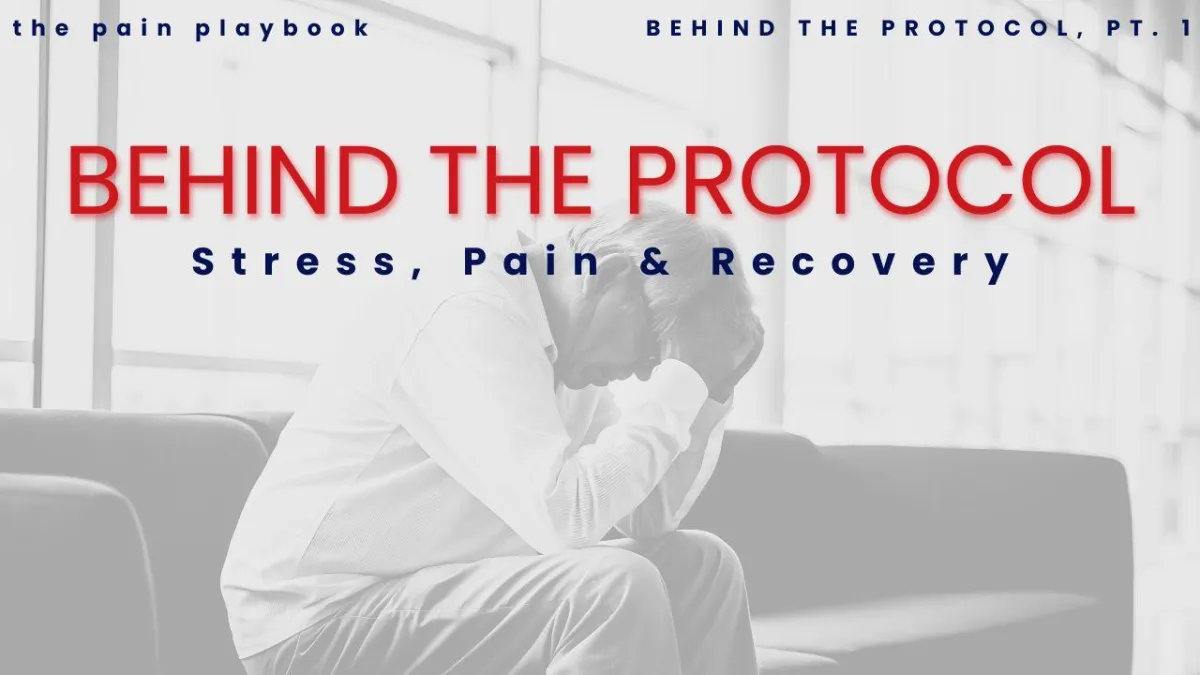
Behind the Protocol Pt 1
Why I Ask About Your Stress Before Touching Your Shoulder
Because pain doesn’t just live in the body, it lives in the story behind it.
Before I ever lay hands on a client, I ask about more than just their shoulder pain or knee stiffness. I ask about their stress. Their sleep. Their breathing.
Sometimes, I even ask how long they’ve been holding their breath.
I ask all this because experience has taught me something that textbooks didn’t:
Pain isn’t always a mechanical problem. Sometimes, it’s a systemic one.
I’ve worked with people who’ve been cleared by every test, stretched by every trainer, needled, cupped, massaged and still, they’re stuck. Not because they didn’t try hard enough. But because no one asked why their system was stuck in the first place.
What looks like a mobility issue often starts with a nervous system that doesn’t feel safe.
What feels like tension is sometimes fluid overload.
And what seems like “tightness” might be years of bracing under pressure.
At BodyTech, we don’t chase pain.
We follow the signals until we find the root, even if that root is buried in breath, lymph, or the stories your body’s been holding onto.
When the Pain Isn’t Tightness, It’s Overload
I see clients every week who’ve been told:
“You just need to stretch more.”
“You’re tight.”
“Everything looks fine — just keep moving.”
And when they land on my table, I don’t always feel tightness.
Sometimes, I feel tissue stuck in survival mode.
Fascia that won’t glide. Fluid systems that aren’t flowing. A nervous system still bracing, long after the threat has passed.
At BodyTech, we don’t chase symptoms around the body.
We look for the root cause — the silent driver behind the tension, pain, or plateau.
Because what feels like “tightness” might be:
A fluid problem — stagnant lymph or restricted blood flow
A stress problem — unresolved nervous system overload
A signal problem — the body sending mixed messages because it hasn’t felt safe enough to release
And when you skip over that and just “stretch it out”? You end up reinforcing dysfunction instead of resolving it.
The smartest recovery doesn’t push through pain. It listens to it. And then rewrites the story.
This Is Why We Start with the Nervous System
Before we stretch anything. Before we talk reps, routines, or recovery gear. We pause. And we listen.
Because here’s the truth:
If your nervous system doesn’t feel safe, your body won’t respond the way you want it to.
Touch, pressure, and movement are conversations with your internal wiring.
And when that wiring is stuck in fight-or-flight, even the most “gentle” approach can feel like too much.
I see this especially in:
Women going through hormone shifts or burnout
Clients coming off long-term stress, illness, or surgery
People carrying trauma (emotional or physical) in their tissue, even if they don’t always have the words for it
That’s why at BodyTech, we lead with nervous system-informed strategies and lymphatic restoration. Because true recovery starts when your body feels safe enough to stop bracing.
Once that happens? Everything else — strength, mobility, energy — starts to flow.
Not Just Trauma-Informed, Recovery-Informed
Let’s be honest, recovery isn’t a checklist.
You can’t force a body to bounce back on someone else’s timeline. And you can’t rush healing by only treating what’s obvious.
That’s why our work at BodyTech goes deeper than “what hurts.”
We look at how your system is really functioning, not just how it’s feeling today. We start with the basics that often get overlooked: breath, lymph flow, blood circulation.
And instead of chasing pain around the body, we slow down and listen for the root of the resistance.
Because pain isn’t always about damage.
Sometimes it’s about protection.
Sometimes it’s about overload.
And sometimes, it’s about something no one ever asked about before.
Every protocol we build is layered, intentional, and centered around you, not a textbook.
It’s less about doing more and more about doing what actually works for where you are right now.
Because that’s what recovery-informed care really means. Not just knowing the science, but also respecting the human.
Maybe you’ve felt it, too
That quiet tension under your skin. Not quite pain but not ease either.
Like your body is stuck in a loop it can’t quite finish.
You stretch. You move. You rest. But something still doesn’t shift.
That’s where we begin.
Because real recovery isn’t about chasing the symptom.
It’s about listening to the entire story your body is telling.
This post kicks off our newest blog series:
Behind the Protocol: What Your Recovery Plan Might Be Missing.
Over the next few weeks, we’re pulling back the curtain on the why behind what we do, and the unseen layers that make healing feel real.
You’re not broken. And your recovery shouldn’t feel like guesswork.
Let’s go deeper. Together.